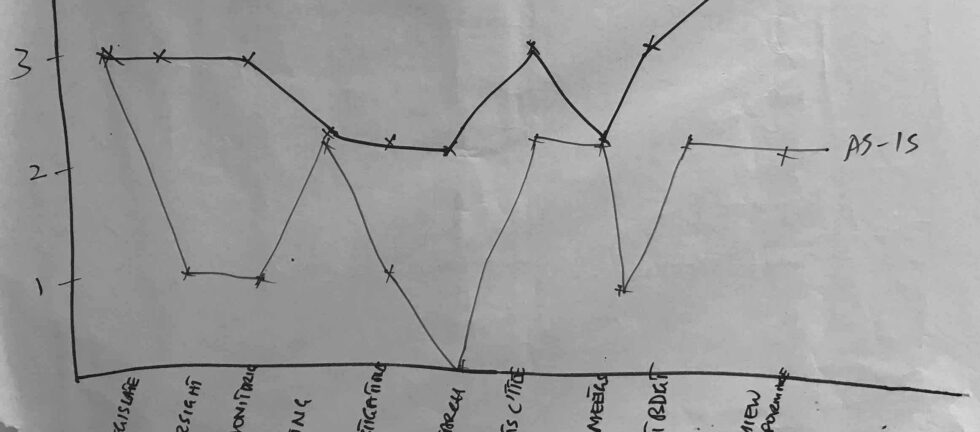There are many innovation activities a company could employ to innovate, such as ideation workshops, hackatons, design sprints, intrapreneurship contests, open innovation etc.
However, most companies don’t have the capabilities nor skills to execute all of these activities. Arguably the most impactful innovation activity they could engage is running projects across a front-end innovation process, for example Design Thinking. This process covers the stages between challenge / problem identification and prototype testing, before going to market. Here is a snapshot of the activities one would need to perform along such a process:
- Analyse the portfolio of your existing products and services
- Select one, which will become the starting point of your project (either product, service or business model)
- Set up the innovation team
- Define the innovation process and plan your initiative
- Structure your assumptions – e.g. customer needs – including jobs to be done, pains and gains
- Confirm your assumptions and find out new insights through discovery experiments
- Generate value-creation ideas
- Build various solution prototypes
- Define the business model
- Test your assumptions through validation experiments
- Define your MVP (Minimum Viable Product)
- Decide your go-to-market approach
The natural questions arising are:
- Where should we innovate?
- What is the ideal team for an innovation project?
- How does a front-end innovation process look like?
- What tools could we use?
Where to innovate? Defining your innovation project
Remember to always align your innovation initiatives with your corporate and business unit strategy, to avoid an ”innovation theatre”.
A good place to start could be visualising your portfolio of products and services. One simple way of doing that could be the Pioneers-Migrators-Settlers Map.

The Pioneer-Migrator-Settler Map is an analytical tool used to:
- Succinctly illustrate a company’s current industry landscape, and identify where its portfolio stands in relation to the competition
- See beyond today’s performance and identify the growth potential of current and future businesses
The idea is to identify a slow-growing product or service and apply the innovation process on it. At the end you might obtain an improved product or service (incremental innovation – or renovation), a new product / service (adjacent innovation – or reinvention) or a completely new business model, a new product / service offering in a new market (transformational innovation – or reimagination).
Project team
The project team should represent all relevant business functions: customer facing, product, sales, marketing, product, operations, finance, legal, compliance. Also, it should be a heterogeneous team, in terms of business experience, seniority, genders and personality type, and ideally should include some influential people in the organisation.
Innovation process
In terms of process, the Design Thinking could be a great process for understanding opportunities and creating and testing solutions in an iterative way (fail fast / learn / adapt). The typical six stages could be condensed as below.
Understand
- Analyze external environment (market forces, industry forces, trends etc.)
- Analyze customer needs and fit with current offering
Explore
- Develop new ideas for creating value to customers
- Redefine value proposition to target customer needs
- Ideate on how to innovate at various levels (business model blocks)
- Create several business model prototypes
Materialise
- Create and test value proposition and business model prototypes
- Select best and prepare go to market
Ready to start innovating in your company? Follow us to learn more about the innovation process and tools.
Newsletter
Subscribe our newsletter to get our latest update & news

